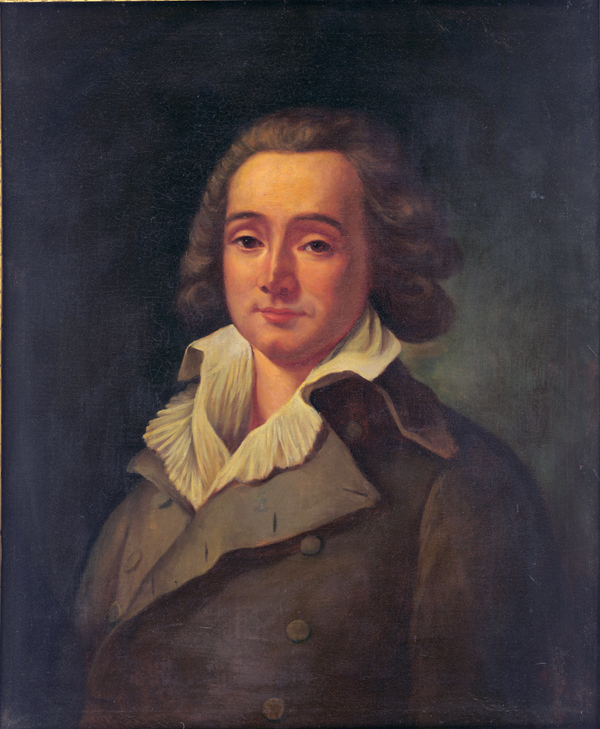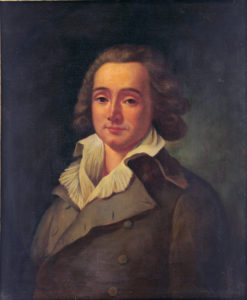Pierre Clément de Laussat
As the highest French civilian official in Louisiana, Pierre Clement de Laussat ceded control of the territory to the United States as a result of the Louisiana Purchase.

Courtesy of Louisiana State Museum
Pierre Clément Laussat. Molinary, Andres (Artist)
Pierre Clément de Laussat presided as the highest French civilian official in Louisiana for a short but crucial period in 1803. As colonial prefect he took possession of the colony from Spanish officials as stipulated in the Treaty of Ildefonso; three weeks later Laussat, in turn, ceded control of the territory to the United States as a result of the Louisiana Purchase.
Laussat was born in Pau, France, on November 23, 1756, to a family of government officials. Educated in French law, he served as receiver-general of finances for the local assembly in his home province of Béarn from 1784 to 1789. As political institutions underwent considerable reorganization during the French Revolution, his career took several turns between 1789 and 1799.
After Gen. Napoleon Bonaparte carried out a coup in 1799, establishing the governing body called the Consulate, with himself as First Consul, Laussat served in the legislature and assisted with the creation of the constitution. When Napoleon successfully negotiated the return of the Louisiana colony from Spain, Laussat recognized an opportunity for advancement and requested that he be named colonial prefect of Louisiana. In August 1802 Napoleon appointed Laussat to the position, and in January 1803 he and his family set sail. The new colonial prefect arrived in New Orleans in March; unbeknownst to him and the residents of Louisiana, Napoleon had already agreed to sell the entire colony to the United States barely a month later.
After receiving official notification of the sale in August, Laussat served as commissioner of the French government for the retrocession of Louisiana from Spain to France on November 30, 1803. Juan Manuel Salcedo, the Spanish governor, handed over the keys to New Orleans’s fortifications, and the Marqués de Casa Calvo, the previous governor, declared that all Louisiana residents were released from their oath of allegiance to Spain. Just three weeks later, on December 20, Laussat would preside over a similar ceremony with William C. C. Claiborne and Gen. James Wilkinson, transferring the territory to the United States.
Laussat used the time between these two momentous events to select the most talented Frenchmen he had encountered during his brief residency in Louisiana to serve in New Orleans’s municipal government, in the hope that it would help the city’s French population maintain their position and influence under the new regime. To honor the memory of the “Martyrs of Louisiana,” whom Governor Alejandro O’Reilly had ordered executed in 1769 for refusing to submit to Spanish rule of Louisiana, Laussat named Jacques Philippe Villeré, the son of one of the patriots, to the governing body. Laussat also took pains to include two Americans on the municipal council.
Laussat next served as colonial prefect of Martinique until 1809, when the British successfully invaded the Caribbean island. He was captured and sent to England as a prisoner of war but was released at the end of 1809. From 1810 to 1814, Laussat acted as prefect in the Belgian cities of Antwerp and Jemmapes; in 1819 he was named administrator of French Guiana and governed there until 1823. For his service Laussat received the Cross of St. Louis and was made a baron. Laussat married Marie-Anne de Péborde in 1790, and they likely had four children: Zoë, Sophie, Camille, and a son (whose name is unknown). He died at his château of Bernadets, outside of Pau, France, in 1835.
Sources: Pierre Clément de Laussat, Memoirs of My Life to My Son … , trans. By Sister Agnes-Josephine Pastwa, ed. By Robert D. Bush (1978); Alcée Fortier, Louisiana, 3 vols. (1914).
This text was adapted from Pamela D. Arceneaux’s entry for the Dictionary of Louisiana Biography, a publication of the Louisiana Historical Association in cooperation with the Center for Louisiana Studies at the University of Louisiana, Lafayette. http://www.lahistory.org.
